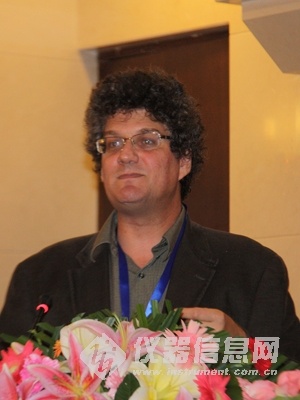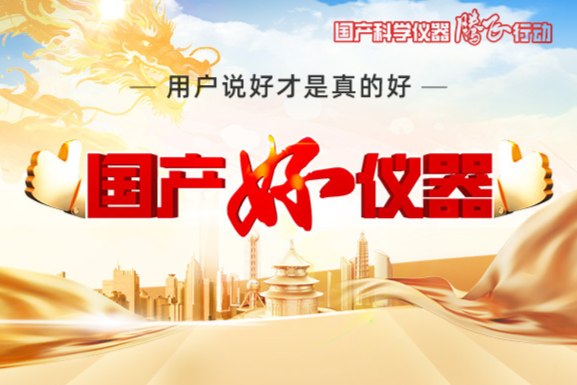









美国化学会出版的Analytical Chemistry(以下简称为AC)于1929年创刊, 是化学领域中一流的计量科学杂志,刊载分析化学原理与应用方面的优秀论文,侧重于新测量方法的发展和环境、药物、生物技术以及材料科学方面实际应用的探讨。目前,AC的影响因子是5.86。
2012年9月14-15日,AC杂志主编Jonathan Sweedler 教授应邀来京参加第二届中美分析化学研讨会,会议期间,仪器信息网编辑(以下简称为Instrument)就分析化学发展趋势和AC自身以及学术类期刊的发展等问题对Jonathan Sweedler 教授进行了专访。

Analytical Chemistry主编Jonathan Sweedler博士
一、AC及学术类期刊将如何发展?
Instrument:就全球来说,分析化学方面的杂志有很多,您觉得AC有哪些独特之处,为什么能够保持行业内领先地位?未来,AC又会怎样发展?
Jonathan Sweedler:正如你所说,AC是老牌的分析类杂志之一,有着悠久的传统,另一方面,AC也有着广泛的覆盖范围。它涵盖了分析化学的全部领域,其中很多论题所涉及的仪器也都能在贵公司网站找到。对那些新的发展领域来说,它们显然希望能够出现在AC上以吸引更多人的关注。同时,我们也鼓励中国、印度以及世界各地的发展中国家像发达国家一样积极地发表论文。此外,我觉得AC采用的模式也十分有效,即我们聘用的、和我们一起工作的都是我们能找到的分析化学各分支最好的专业人士,由他们负责审查审稿过程和评价学术论文。这些编辑来自世界各地,在12位编辑中至少有5位成员来自美国以外的其他国家,1人来自亚洲,其余来自欧洲。并且,还有其他国家的编辑在陆续加入,可以预见,我们的编辑团队将会越来越国际化。
未来,秉承我们的优良传统和有效模式,我相信AC仍将保持发行类综合化学期刊的领先地位。作为科学刊物,我们属于非营利性质,我们的目标就是为分析化学行业服务,因此,AC一直积极努力成为全世界化学领域最好的代表。
Instrument:目前中国有些关于影响因子的争论,请问您如何看待影响因子?AC近些年的影响因子不断在提高,对于杂志如何提高影响因子,您有没有什么方法或建议?
Jonathan Sweedler:作为一个分析化学家,我喜欢用数据评价工作。影响因子指的是一个期刊过去两年内发表文章被引用次数与发表文章总数的比值。因此,首先它是一个很短时间的窗口,只能考察2年的期刊情况。在分析化学领域,显然很多好文章的引用时限更长。有趣的是,我们文章的引用半衰期(衡量期刊文章老化速度)是5年,而其他一些期刊的引用半衰期却很短。因此,就引用频率而言,AC上的文章可能比一些影响因子更高的期刊还要高。另一方面,影响因子仅是每篇文章的一个平均值。一些非常优秀的杂志,比如说我喜欢的杂志之一,Nature Methods,它每年出版文章120篇,还不到我们出版量的十分之一。因此,AC的引用率要高出Nature Methods.很多倍。如果就单篇文章的影响,Nature Methods的引用平均数更高,如果谈到期刊的影响,则AC拥有更高的引用率。我们期刊每年总的引用数量超过1000,这是一个很高的数字,这也是AC影响很大的原因。因此,要看你具体怎样衡量,就像每种分析仪器有不同的测量指标,哪个更重要?检测限、动态范围、成像能力?没有一个统一的答案,同样地影响因子也不是衡量期刊的唯一指标。
谈到我们的影响因子,相对于一些其他的分析化学期刊,我认为还是相当令人印象深刻的。我们增加了出版文章的数量,这一举措也让我们的影响因子有所上升,但你需要考虑怎样去选择文章。好的文章会使影响因子上升,但是对文章质量的过高要求会使发表文章的数量减少。而实际上,很难在出版大量文章的同时保证影响因子上升,这也是我们在过去的10年一直努力的方向。问题的关键是要在质量和数量之间保持一个平衡。
Instrument:作为科学杂志,AC已经历经了84个年头,请问AC是如何经营、处理收支问题的?在中国和其他很多国家,学术类期刊都面临经济困境,请问您有没有什么好的解决方法或建议?
Jonathan Sweedler:我认为,无论对我们还是对其他杂志,最大的挑战是快速变化的出版形式。我们不再是印刷期刊,转而用互联网发表文章,因此很明显,在过去的10-20年间收入和分配模式发生了很大的变化。AC属于美国化学会,目前后者已发行超过40份化学类期刊。作为AC的主编,我在出版内容方面拥有100%的决定权,将要发表的文章,学术部分都由我控制,但是商业运营方面则由隶属于美国化学会的另一个不同的部门来操作。也就是说,学术和财务各自独立,这就是美国化学会的运作方式,这种方式也让我有效地运用身边资源从而更好地对杂志内容进行管理。
怎样保持一个期刊的财务的正常运转?显然,图书馆订阅十分重要。另外,我们也受益于协会良好的出版基础。当然,我也必须要说到我们优秀的外聘审稿专家,虽然属于免费服务,但他们为杂志做出了很多贡献。
二、AC如何看待分析化学的研究热点及其在中国的发展?
Instrument:作为权威杂志,AC一定收到了全球专业人士的大量投稿,请问各个国家和地区的投稿情况如何?哪些国家占得比例较多?中国稿件的比例又如何?
Jonathan Sweedler:AC确实收到了来自世界各地的投稿。去年,我们收到了3600篇文章,发表了1300篇,占到总稿件的三分之一,我觉得其中15-20%的文章来自中国。截至今年7月份,我们已经发表了160篇来自中国的文章,按此趋势发展,2012年,来自中国的文章总数会超过200篇,占到出版文章的18%,这也将是有史以来发表中国文章最多的一年。但毫无疑问的,投稿最多的国家是美国,约占总投稿量的40%,这可能和我们隶属于美国化学会有关。当然,来自欧洲的文章数量也不少,因为欧洲包括了很多国家。但这也和领域有关,部分领域我们收到的文章就很少。
让我们再回到中国,大约20年前,只有2%的投稿来自中国,我们可以很清楚的知道到现在这个投稿量已经涨了7倍,并且仍在增加。必须承认,分析化学在中国发展地相当迅猛。
Instrument:从投稿情况看,您觉得目前分析化学研究的热点是什么?各地区的研究热点有何差别?
Jonathan Sweedler:这是个好问题,我曾经专门关注过分析化学不同领域的影响因子。生物传感器、单分子研究、单个细胞研究、纳米技术、代谢物组学等都是关注的热点,而和这些领域相关文章的影响因子明显高于分析化学的平均影响因子。
但我对不同地区关注的热点则不是很清楚。我会确定每篇投稿所属的领域然后把它发给相关的编辑进行审核,比如,有一篇来自美国的有关纳米技术的文章,我会把它发给负责纳米技术的日本科学家Yoshinobu Baba,我们只是根据学科来分配文章和编辑,而不会根据地区进行统计。
Instrument:从投稿来看,您觉得各个国家和地区分析化学的发展情况如何?哪些中国的科研机构和科学家实力比较突出,给您留下了深刻印象?今后的发展前景如何?
Jonathan Sweedler:当我审核稿件时,我看到了来自很多国家的高质量的文章,美国的水平自不必说,许多欧洲国家比较出众,中国和日本也同样突出。中国处于蛋白质组学和代谢组学研究的前沿,还有着高端的仪器和出色的培养计划。因此,有很多优秀的论文来自中国并不让人感到奇怪。
至于优秀的中国科研工作者,我宁愿不给出个人的名字,因为一旦我说出一些突出的研究人员,很可能遗漏很多优秀人士。这次到访中国,我参观了几个科研机构,它们的研究进展和培养计划都很出色,给我留下了深刻印象。我看到中国的很多研究机构,比如北大和中科院化学研究所的规模丝毫不亚于美国同类的机构。但我相信一定还有很多地方是我还没有去过、没有看到的。我可以这样说,中国的分析化学正在不断壮大和发展。
我认为,中国分析化学的未来是光明的,并会一直持续发展,因为中国正在做的工作都十分有意义:培养一流的分析化学研究人员、开展精彩的前沿研究并发表一些顶级的分析化学论文。只有一件事我觉得做的还不够,那就是中国制造的仪器设备。我预计这将在未来的10-20年有所改变并出现完全由中国制造的创新型的分析化学仪器。在这个意义上,我相信将有更多中国公司的产品不仅在中国畅销,更能推向全世界。如果你觉得目前在质谱、色谱和某些领域,有一些中国公司正在努力扩大国内市场,我觉得未来随着杰出研究和学术成果的推进,这些仪器公司最终将走向世界。
三、AC对投稿者有何建议?
Instrument:AC审核稿件的程序是怎样的?
Jonathan Sweedler:在说具体审核流程前,我想先说明这些审批程序只有一个目地,那就是出版我们收到的最好的文章。下面,我就简单介绍一下文章投稿后的审核过程。当有人通过我们的网络界面投稿后,我们的期刊管理人员会首先查看文章的完整度,如果不够完整或者存在其他问题,比如长度过长,我们会直接退回,否则就会进入下一步骤,通知我安排审核该文章。我会通读文章以确定它是否符合AC的涉及范围和质量要求。做此决定有时仅花费几分钟,有时则超过45分钟,还可能需要和副主编进行讨论。就我估计,仍有15%提交的文章会因为写作范围、质量和一些其他问题被专业编辑退回。
我觉得可以接收后,会将文章交给相关专业的优秀编辑审查。他们会仔细阅读文章,并参考我的意见,他们可以决定该文章是否适合AC和是否进入下一步的外部审核。如果适合,编辑会选择适合的评委并负责审核过程的全部细节。根据评委意见,文章或者录用,或者发回作者通知修改或拒稿。当修改后被我们再次接收时,文章很可能被录用。
随后,文章会进入排版发表步骤,我们出版部门人员效率非常高,几天之内就可完成排版,在接到最终校稿的24小时内就可在网站上显示。用时方面,虽然排版、发表则只需要几天,但外审过程却可能花费几星期到一个月的时间。
Instrument:您对准备投稿AC的研究人员有何建议?
Jonathan Sweedler:首先,我假设作者已经完成了一些出色的研究课题,他们需要考虑他们的目标读者以确定最适合发表他们研究成果的刊物。我的意思是,最好根据目标读者、研究的质量和作者的预期目标来进行选择。接下来,阅读期刊投稿须知然后仔细加工文章(我希望,作者在进行课题研究的同时已经有了文章的提纲)。在作者完成写作和修改之后,可请同事阅读并给出他们的意见。在一篇文章发表前,可能要进行一系列的修改,产生一打甚至更多的草稿。
我觉得一些中国和美国作者认为审稿是随机抽奖。因此,为什么不投到JAAS或AC试试,看是否能被选中出版?相反,我强烈建议作者先看看自己的文章是否符合杂志的投稿范围,如果是就尽可能符合该期刊的写作风格,这样文章被录用的可能性将会更大。说明一点,我们杂志的网站设有专门版块,为作者提供资源以帮助他们更好的完成写作;和研究一样,写作也是种技能,可以不断提高。
最后,希望中国的科研人员把最好的分析研究成果发到AC,我期待能够有幸阅读!
采访编辑:刘立洋
以下为采访稿英文:
Instrument:There are a lot of journals about analytical chemistry. What are the unique features of Analytical Chemistry and what allows Analytical Chemistry to maintain a leading position among academic journals? Please talk about the development of Analytical Chemistry in the future.
Jonathan Sweedler:As you know, Analytical Chemistry is one of the older analytical journals so it has a long tradition. Another aspect is its broad coverage. It covers the entire field of analytical chemistry, and so covers topics related to most of the instruments that are on your website. As new fields develop, they are obviously going to appear in Analytical Chemistry. And we certainly encourage papers from China, from India, from developing as well as developed nations around the world. In addition, Analytical Chemistry has a model that I think is very effective. We hire, we work with, we appoint the best associate editors possible from all the subfields of analytical chemistry and they are the ones that control the review process and evaluate the scientific papers. In addition, our associate editors come from around the world; we currently have five of twelve editors who are not living in America: 1 is from Asia, quite a few from Europe. So we are becoming more geographically diverse and we are sure that number will increase as new editors are added.
In the future, as we have a good model and a good tradition, Analytical Chemistry will continue to be the best general analytical journal published. We are non-profit; our goal is to serve the field of analytical chemistry. So the journal of Analytical Chemistry is actively trying to represent the best of our field of science to the world.
Instrument:Now, there are some debate about the impact factor (IF), could you tell us what do you think of the impact factor? In recent years, Analytical Chemistry’s impact factor continues to improve, if you have some methods or experience on how to improve the academic level?
Jonathan Sweedler:As an analytical chemist, I like measures that work. And the impact factor measures the number of citations to a journal over two year period divided by the number of articles. This is a very short window, it is only two years. Many good articles have a longer cited period, and this is field specific. I find it interesting that our cited half-life is longer than 5 years, which means after 5 years, the average article has received less than half of the citations it will eventually receive. However, some other journals have a much shorter half-life. So our articles in analytical chemistry may get more citations on average than the journals with a higher impact factor.
Another aspect is that impact factor is a per article average. There are some good journals, let me pick one by name that I like to read, Nature Methods, that publish about 120 articles a year. We publish more than 10 times that number. So the number of citations to Analytical Chemistry is many times higher than Nature Methods. The average citations for a Nature Methods article is higher than ours. If you want to think about the impact of a journal, our journal has many more citations. In fact, the total number of citations to our journal reached nearly 100,000 last year. I would say that the impact of our journal is high! So, it really depends on what you are going to measure.
Just like there is more than one figure of merit for an analytical instrument, there is for a journal. Ask yourself which is more important: Detection limit? Dynamic range? Imaging capability? Well, there are multiple correct answers depending on your measurement need. Similarly you shouldn't use the impact factor is the only figure of merit of a journal.
Getting back to our impact factor, I think it is impressive that we increased the number of articles we published and our impact factor continued to go up. While the easier approach is to publish fewer carefully selected articles, it is actually hard to publish more articles and have your impact factor increase. And that is what we have been doing over the last 10 years. You should keep a balance between quantity and quality, and this has been our goal.
Instrument:As an Academic Journal, Analytical Chemistry have a history of 84 years, I would like to ask you that how to operate it and keep balance between income and expenditure? In China and other countries, some academic journals are facing financial difficulties, would you have any suggestions?
Jonathan Sweedler: I think the biggest challenge of our journal, or of other journals, is rapidly changing publishing landscape. We are no longer a print journal, and use internet to deliver our content. Thus, the income models and the distribution models have changed over the last 20 years. Analytical Chemistry belongs to the American Chemical Society, which publishes more than 40 journals related to the chemical sciences. As the editor-in-chief of Analytical Chemistry, I have complete control of the science that is published. The research articles and the science are under my control. However, the business model is actually managed by a different group within the American Chemical Society. In one sense, the scientific and financial aspects are separate. This is the American Chemical Society’s operating model and it is effective in allowing me to have the resources I need to run the journal effectively.
How do you keep a journal financially viable? Obviously library subscriptions are important. We have benefit of the publishing infrastructure of our parent society. Of course, I have to acknowledge the efforts of our outstanding reviewers who provide their service for free.
Instrument:As a leading journal of analytical chemistry, you receive articles from the entire world; could you give us an introduction about the proportion of the articles from specific countries? Which countries occupy a higher proportion? What has been the Chinese ratio recently?
Jonathan Sweedler:Analytical Chemistry does get articles all over the world. Last year, we had about 3600 articles submitted with about 1300 published. So one third of the submissions get published. I think between 15%-20% are from China; this year by July we had almost 160 articles from China published. So that means we are on track to have over 200 from China in 2012, which would be the highest number from China we have ever published. This will represent about 18% of all published articles. We also have a large number of articles from Europe (although Europe includes many countries). There are other areas that we have fewer articles and are under-represented. There is no doubt the largest fraction of articles are from the United States. These articles make up about 40% or so of our submitted articles. That's partly historical as we started out as an American Chemistry Society journal.
Getting back to China, about 20 years ago, only 2% of the articles were from China. So it is gone up 7-fold, and is still increasing. I should say analytical chemistry in China is absolutely fantastic.
Instrument:From the submitted manuscripts, at present, what do you think is the analytical chemistry research hot spot? And moreover, what’s the difference among different countries and regions?
Jonathan Sweedler:These are excellent questions. I have looked at impact factor by field of analytical science. Topics related to biosensors, single molecules, single cells, nanoscience, and metabolomics are popular. And the impact factor of articles related to these fields is higher than the average for analytical chemistry.
But I have no idea of geographical hot spots. I determine the scientific area of each article and send it to the associate editor that makes the most scientific sense. If there is an article related to nanoscience that comes from US, I may send it Yoshinobu Baba in Japan, for example. We assign editors based on science.
Instrument:According to manuscript, how about the development of analytical chemistry in various countries and regions, you think? Which research institutions, groups or scientists give you a deep impression in China? And how about the future?
Jonathan Sweedler:When I look at the submitted manuscripts, I certainly see high quality papers coming from a number of countries; obviously America is very good, and many European countries also have outstanding science. So do China and Japan. China has cutting edge proteomics and metabolomics research, having high end instrumentation and excellent training. It is not surprising that we see excellent papers from China.
As far as exemplary Chinese researchers, I’d rather not name individuals as if I start naming productive researchers, I will leave others out. On this trip I have visited only a few institutions. These few have deeply impressed me. The research and the training here has been outstanding. There are probably many other locations which I have not been and haven’t yet seen. The scale and size of some of the groups I have seen in China are as big as if not bigger than those in America, such as those at PKU and Institute of Chemistry. As far as I can tell, analytical chemistry is strong and vibrant in China.
I think China’s future in terms of analytical chemistry is bright and I predict this will continue because China is doing such a good job of training really first class analytical chemists, doing wonderful cutting edge research, and publishing some top analytical chemistry articles. The one thing I haven’t seen as much of is instruments made in China. I predict that this will change in the next 10 to 20 years and that there will be innovative analytical instruments that are completely home grown in China. In that sense, we will have more companies that are Chinese that are not only sold in China but also in the rest of the world. So I think if you think in terms of mass spectrometry, chromatography and other fields, there are certainly Chinese companies and they tend to be selling most in China. I think this will change, as the excellence of research and academics moves to instruments companies, I expect the Chinese instruments companies will do well throughout the world.
Instrument:How about the process of going over a manuscript?
Jonathan Sweedler:Before going over the steps that occur when we receive a manuscript, let me say the process has as its goal a simple one: to publish the best science we receive. Now let me briefly go over the steps after submission, When somebody submits an article to us using our web interface, our journal administrator looks at it to make sure it is complete. If it is not, or if it has other issues such as being too long, it is returned; otherwise, it moves forward. I receive a notification that an article is available to assign; I will look at it to make sure it scientifically fits the journal scope and it seems to be of the right quality; I sometimes spend a few minutes, sometimes more than 45 minutes to make this decision, and oftentimes consult with an associate editor. And I would estimate about 15% of the articles submitted are rejected using the expertise of the editors because of scope, quality and other issues.
Next I assign it to one of our outstanding associate editors to handle. They also look over the article and often based on my comments to them or their own careful reading, they may decide it does not fit the journal and it does not go for external review. Otherwise, the associate editor selects the reviewers and they handle the details of the review process. Based on the reviews, the article is either accepted, or sent back to the authors to modify, or rejected. When we receive it again, it may be accepted.
After we accept it, it goes to journal production; our production staff are amazing and generate the proofs within a few days and it appears on our web site within 24 hours after the final proofs are received. While the review process can take weeks to a month or so, the production is measured in a few days.
Instrument:Do you have any suggestions to a writer when he begins to write an article?
Jonathan Sweedler:First, let me assume that the writer already has completed some outstanding research. They need to consider the target audience they want to reach and use this to decide the best place to publish their research. I mean best based on the targeted audience, the quality of science, and what they are hoping to accomplish. Next read the instructions to authors and carefully craft the article (although hopefully, they have been outlining the article while they worked on the research). After they have finished writing and revising the manuscript, let colleagues read it over and consider their comments. After writing an article, it can take me a dozen or more drafts before I find it ready to submit.
I think some people in China (and America) think reviewing as a random lottery. So why not submit to JAAS or Analytical Chemistry and see if they will publish the work? Instead I suggest you strongly looking at your article and see if this is the right audience and if so, then target that journal. And if you do that, and try to match the writing style of the journal, your article will have a better chance to do well. As a final point: our journal web site has a wonderful section with resources to help you write better manuscripts. Just like research, writing is a skill that can be improved.
And please send your best analytical research to Analytical Chemistry. I look forward to reading it!
附录:Jonathan V. Sweedler教授简历
Jonathan Sweedler received his Ph.D. degree in Chemistry from the University of Arizona in 1988 and spent three years at Stanford before moving to the University of Illinois at Urbana-Champaign. He currently holds the James Eiszner Family Chair in Chemistry, and has just become the director of the School of Chemical Sciences at the University of Illinois. His research themes are two-fold and involve both analytical chemistry and neurochemistry. Specific areas of analytical technology development include small-volume peptidomics and metabolomics approaches. These involve single cell mass spectrometry, mass spectrometry imaging, capillary electrophoresis separation methods, laser-based detection methods, nanoliter volume NMR and microfluidic sampling. His second research theme applies these technologies to the study of the distribution and dynamic release of neuropeptides and classical transmitters, as well as their metabolism, in a cell-specific manner. Sweedler has authored or coauthored over 300 peer-reviewed manuscripts and has delivered over 350 invited lectures. Acknowledging the impact of his research, Sweedler has received numerous awards including the Ralph N. Adams Award from the Pittsburgh Conference, the Fields Award from the Eastern Analytical Symposium, and the Instrumentation Award from the Analytical Division of the ACS. He is currently the Editor-in-Chief of Analytical Chemistry. See http://www.scs.illinois.edu/sweedler/
Analytical Chemistry网站
[来源:仪器信息网]




国产好仪器 | 喆图:质量和诚信赢得客户,企业与客户价值共同成长
2024.09.13

2024.04.02
版权与免责声明:
① 凡本网注明"来源:仪器信息网"的所有作品,版权均属于仪器信息网,未经本网授权不得转载、摘编或利用其它方式使用。已获本网授权的作品,应在授权范围内使用,并注明"来源:仪器信息网"。违者本网将追究相关法律责任。
② 本网凡注明"来源:xxx(非本网)"的作品,均转载自其它媒体,转载目的在于传递更多信息,并不代表本网赞同其观点和对其真实性负责,且不承担此类作品侵权行为的直接责任及连带责任。如其他媒体、网站或个人从本网下载使用,必须保留本网注明的"稿件来源",并自负版权等法律责任。
③ 如涉及作品内容、版权等问题,请在作品发表之日起两周内与本网联系,否则视为默认仪器信息网有权转载。
![]() 谢谢您的赞赏,您的鼓励是我前进的动力~
谢谢您的赞赏,您的鼓励是我前进的动力~
打赏失败了~
评论成功+4积分
评论成功,积分获取达到限制
![]() 投票成功~
投票成功~
投票失败了~